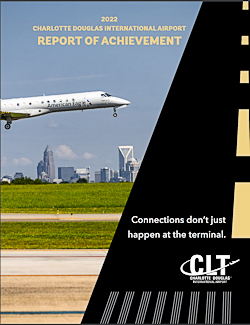Mainstream Sustainability
This November/December issue of the magazine will be distributed at the 15th Annual Airports Going Green (AGG), which is back in Chicago, where the conference was born. We’ve supported AGG over the years and have created special content to match.
 When looking over the slate of stories in this edition, some were included specifically for their sustainability angles while others could fit just as well in other issues. And in some cases, the sustainability story emerged late in the game.
When looking over the slate of stories in this edition, some were included specifically for their sustainability angles while others could fit just as well in other issues. And in some cases, the sustainability story emerged late in the game.
A prime example of the latter is the new ground transportation center at Bradley International (see Page 32). The story begins by discussing airport growth, rental cars, efficiency and the all-important customer experience. All typical ingredients for our stories.
But there’s also a sidebar about electric car charging, which came to light late in the process. What wasn’t a big issue in 2017 when plans for the new facility were first drawn up evolved significantly? The airport added the infrastructure needed to support the number of electric vehicles rental car companies are now bringing online. Having a two-car charging station just won’t do anymore, and this new transportation center reflects that.
Kudos to BDL for working toward market realities that aren’t too far into the distance.
And kudos to our industry for mainstreaming sustainability!
Cheers
2022 Charlotte Douglas International Airport Report of Achievement
 Giving back to the community is central to what Charlotte Douglas International Airport and its operator, the City of Charlotte Aviation Department, is about, and last year was no different.
Giving back to the community is central to what Charlotte Douglas International Airport and its operator, the City of Charlotte Aviation Department, is about, and last year was no different.
Throughout 2022, while recovering from the COVID-19 pandemic, we continued our efforts to have a positive impact on the Charlotte community. Of particular note, we spent the year sharing stories of how Connections Don't Just Happen at the Terminal - from creating homeownership and employment opportunities to supporting economic growth through small-business development and offering outreach programs to help residents understand the Airport better.
This whitepaper highlights the construction projects, initiatives, programs and events that validate Charlotte Douglas as a premier airport.
Download the whitepaper: 2022 Charlotte Douglas International Airport Report of Achievement.
Recent Industry Insider columns
- A Bittersweet Goodbye
- Cyberattacks on the Aviation Sector: Threats, Trends and Strategies
- Empathy is Key to Effectively Working with the Media
- Carbon Capture, Utilization and Sequestration: An Environmental Gold Mine for Aviation?
- Now is the Time for Los Angeles to Lean Into its Aviation Legacy and Shape the Future








